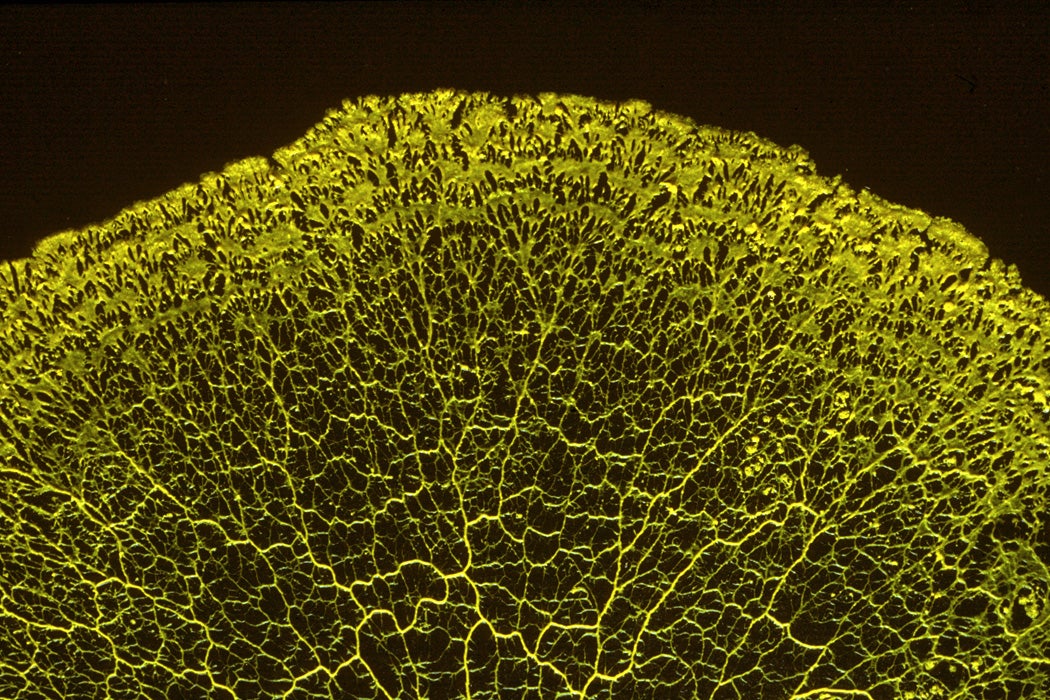When it comes to spatial relationships, slime molds are true masters.
Consider the “Travelling Salesman” college math problem: a hypothetical salesman must make a number of different sales calls and then return home while covering the shortest distance possible. As the number of stops increases, the problem grows a lot more complex. And yet a certain amoeba called a slime mold, induced by a petri dish of agar, easily finds the shortest path.
“Slime mold” is a term for a number of simple jelly-like organisms, usually found in moist environments. A variety frequently used in experiments is Physarum polycephalum, which literally means “many-headed slime.” The organism is basically one giant cell with multiple nuclei that will continue to grow as one big mass in the presence of food. It has no brain or nervous system. When resources are limited, the organism grows more efficiently. Rather than moving as one mass, it extends itself in tubular “veins.” These veins connect far-flung food sources for the benefit of the entire organism, and can grow into weird and beautiful branching shapes.
Since P. Polycephalum is using its own body to form these networks, and growth takes energy, the slime has every incentive to grow as little as possible. Biologist Wolfgang Marwan describes a 2010 study testing the organism’s ability to choose efficient paths. Using oats as building material, researchers recreated Tokyo and its surrounding cities on a flat surface and set P. Polycephalum loose. Soon, the organism had created a network of paths virtually identical to the Japanese railway system, a testament to the efficiency of both slime molds and Japanese railway engineers. Since the slime molds don’t have brains, these efficient networks are not centrally planned; the design seems to be based on organic adaptive growth of the network itself as it grows. Researchers hope to emulate this remarkable ability to develop things like better fiber optic networks.
Get Our Newsletter
Nor is efficiency its only trick. Chris Reid, writing in PNAS, determined that despite lacking a brain P. polycephalum possesses a form of spatial memory. As it moves toward a bait, the organism is able to avoid moving in directions it has already tried. This spatial memory allows the creature to maneuver through mazes and to find bait on the other side of a U-shaped trap. If the organism were simply following a scent, it would continually be stuck in the bottom of the U, close to bait but blocked by the wall. Instead, it deftly maneuvers around the U and goes right to the bait. Not bad for a brainless mass of slime!







